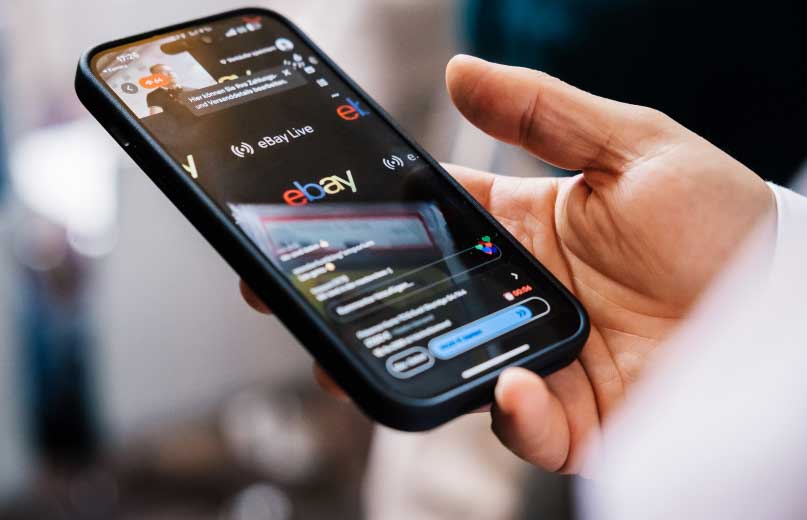What can we expect in e-commerce?
The initial situation
1. E-Com is growing again, but only by 1 digit. Most of this growth will fall in favor of platforms.
2. The channels are constantly changing. New interfaces are being created, old ones are losing their reach. Today TikTok Shop, tomorrow Perplexity, the day after tomorrow “We dont know” as the dominant sales channel. Learning cycles are becoming ever shorter. Products, content formats, advertising materials, UI/UX — everything needs to be tested, changed, optimized. Not once a quarter, but every day.
3. Cost structures are unstable. CPMs fluctuate extremely. Logistics is under pressure globally. Customs regimes only make our calculations more complicated than they already are.
The question is: How do you navigate through it successfully?
Thesis 1: From efficiency to empathy
We are currently unable to predict exactly how AI will change the customer experience in e-commerce.
But one thing is clear: A new level playing field is being created, in which efficiency is just an entry/commodity. The next 100 million Lovebrand is likely to produce an organization of 5 people and the following is what will happen:
There will be two worlds:
1. The machine-dominated e-commerce: transactional, ultra-rational, AI-optimized. In this world, platforms will win. Amazon, Temu, TikTok Shop and we will all just be interchangeable suppliers.
2. The emotional, empathic commerce: Build closeness, solve problems, tell authentic stories. I believe that there is a window of opportunity here - Alex, that is my antithesis to your first one.
This creates a real space of options for retail — getting close to its actual value proposition again: real curation, service & advice, and in the end a community that is activated all by itself.
Those who are already really good at this today are niche players - they have this skill at their core and that's why this also requires a new performance measurement for customer understanding, empathy and closeness. This enables us to develop completely new potential. With 4-6 more orders per year alone, in our relevant cohorts, e-commerce is once again more commercially fun, even despite low margins!
Thesis 2: New Channels - New Winners: The upsides of extreme multi-channel capability
E-commerce is already at an average saturation level in most categories, consumer sentiment is added and there are no more extreme growth opportunities. I am asked very regularly what I think of various channels, such as TikTok shops, live shopping, what is happening with regard to Perplexity shopping. Apart from the fact that this question can actually be answered by itself, I always believe when in doubt - it's best to try it out and if it's only possible: as early as possible, because the upside is gigantic.
Mind game: If we could go back to the past of e-commerce with the knowledge of what we have today, what would we do differently? We would certainly have filled all new emerging channels and formats more consistently and earlier.
Quite a few of us here might even be big influencers ourselves. Looking back, we all got too little out of the now established channels because we're only now seeing how easy it was back then. You can and must learn something from this.
Whoever is there early harvests disproportionately. The risks are manageable, the potential is enormous:
- Arrive early, take underpriced attention
- Lower acquisition costs: Less competition means cheaper advertising spaces and higher attention.
- Learning advantage: You optimize your strategies while others are still hesitating.
- Brand positioning: Establish yourself as an innovative leader in the perception of your target group.
- Customer loyalty: Early adopters often become loyal brand advocates.
- Algorithm advantage: Many platforms reward early, active users with better visibility.
- new channels, new winners, please rate them as an opportunity, not as a challenge
I am essentially concerned with an extreme form of multi-channel ability, which must become a core competence in order to get attention and not only when there is reliable benchmark data.
Thesis 3 - Speed beats strategy
Everything is fast - except us
Speed beats strategy. What we see are changes on a macro and micro level on a weekly basis. Frightening volatility, to which we react in parts with shock.
At the same time - we are far too slowly set up in organizational setups to respond to these changes in a resilient attitude, to adapt strategies, teams and priorities both structurally and flexibly. The pressure to innovate clearly exceeds our willingness and ability to take risks. Our roadmaps are full for the next 18 months - my bad word - rollout in Q2 2026.
In addition, new market leaders are emerging on a quarterly basis - Temu was MVP ready after 3 months. We need 3 months for a board meeting - in a company that generates a few hundred million euros in turnover. Not an innovation problem, but a structural problem, but the methods are all there.
In the end, the few who have built the best set-up for change will be successful.
%20(1).jpg)
.jpg)


